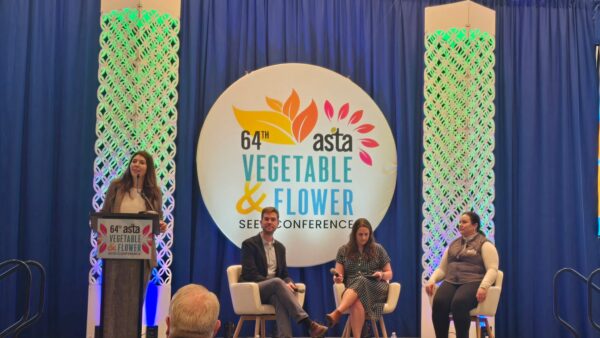Head of Research and Development, Bayer Crop Science Division
The U.S. National Academy of Sciences recently released its long-awaited report on genetically engineered (GE) crops. More than 50 scientists and agricultural experts contributed to the 388-page report, which includes a fresh review of 900 studies covering more than 20 years of research. It is an important document not only because it confirms the safety of GE crops, but also because it points to new areas of research and calls for a strategic investment in emerging technologies to address our future food security.
But how will we rise to meet this challenge?
A 2015 report entitled “The Future Postponed” published by the Massachusetts Institute of Technology raised concerns about how declining investment in basic research threatens America’s preeminent role in innovation. The report highlights the decline in public investment in plant sciences, which is far below that of other scientific disciplines, despite the fact that the U.S. agricultural sector accounts for 2 million jobs and is a major source of export earnings. With other countries increasing their research investments, the United States is at risk of losing its leadership in this critical area.
Although public spending does not account for the considerable investment made by the private sector, it would be disastrous if the United States were to back away from its longtime commitment to agricultural research. After all, when rapid population growth raised concerns of a worldwide famine during the 1960s, it was the United States, led by Norman Borlaug, which spurred the “Green Revolution” and introduced modern agricultural practices to developing countries. Dr. Borlaug earned a Nobel Prize for his efforts, which have saved an estimated 1 billion people from starvation.
Fifty years later, we see similar food challenges, as the world’s population is expected to exceed 9 billion people within the next generation. To feed them, we will need to increase food output by 70 percent. As successful as the Green Revolution was, it is clear that we must do more to increase our research capabilities. That is why Liam Condon, president of Bayer’s Crop Science Division, has called for a “New Revolution in Agriculture,” which will involve innovative solutions and cooperative partnerships to achieve a sustainable system of quality food production.
Our understanding of molecular biology has increased with the evolution of GE cropping systems. However, the techniques used to modify single genes are not sufficient to address the next wave of traits that will allow us to increase the yield, quality, stress tolerance and disease resistance in new plant varieties. Advances in targeted genome optimization, such as gene editing, will allow us to cleave complex traits at specific locations to disable or edit specific gene expressions. These new tools also will help address insect and weed resistance issues associated with the first generation of GE traits.
While such research is exciting, it is also expensive. Private companies run the risk that a return on investment in pursuing these technologies may not pay off. However, it’s also true that breakthrough innovations will only come from a long-term commitment to research. I’m pleased that Bayer has increased its total research and development investment each year for the past several years, not only in basic research, but also in personnel and infrastructure, which are critically needed to overcome our food challenges.
Education Needed
While it’s hard to believe, there are some who question the very innovations that have helped make food more abundant and affordable to millions of people. We hope the NAS report confirming the safety of GE crops will help dispel such concerns, but we can’t afford to be complacent. Educating the public and the media on the safety and benefits of novel technologies is a necessity. After all, a poor public perception of agriculture may lead to bad policy decisions and unnecessary restrictions on breakthrough technologies — just when we need them the most.
Agriculture routinely copes with insects, diseases and weeds, but it also must contend with a growing population, declining research investments and a society that is largely disconnected from the farm. Nonetheless, I’m optimistic that we will overcome these challenges by building on our past success to usher in an exciting new era of agricultural innovation. With hard work and a little luck, we can keep the Green Revolution from going gray.












